Operation Tonga - Pegasus Bridge part 1
One of my primary projects for 2024 is to build an accurate Pegasus bridge table on a permanent setting, with that in mind I have started to collect a number of period photos together, plus intelligence photos, postcards of the village. I will also identify the gliders and build them as per the description of the destruction upon landing. I will be using three or four books on the subject plus a few local photos from my visits and actual measurements for scratch building or 3d printing. I will also build specific tiles for the table to cover both the Bénouville bridge (pegasus), and the Orne river bridge (Horsa), plus the village of Bénouville up to the cross roads and perhaps the chateau Bénouville and the edge of the village of Ranville.
I plan to build all the buildings at 1/76th scale approximately so the templates are not to large. For he bridge over the canal I have purchased the 20mm resin bridge from ravensthorpe for Pegasus bridge but have already started to add a few modifications to the resin piece including new hand railings and more accurate supports and the boom gates. The bridge over the river Orne will be a 3d printed piece. The narrow gauge rail line will be likely N scale track to reduce the footprint of the line. I have purchased the Bénouville chateau also as a 3d file, not sure if i will add it to the table though as it is huge.
The Bridges and environs
 |
 |
| British soldiers crossing the bridge heading to Ranville. note the boom gates, metal pedestrian fencing the bank revetments, the edge of the gunpit, and the British load sign |
 |
A photo of the bridge after the war as the sandbags are missing on the control shack, the Pegasus sign is up on cafe Gondrée, note the large trees on the right where the train station is. |
Myths about Pegasus bridge
- First building liberated was not in fact cafe Gondree, but the building opposite .
- Commandos of lord Lovatt ; Bagpipes not played at Pegasus bridge as per the "longest day" but as the commandos crossed Horsa bridge.
- Resistance told allies germans had explosives on the bridge, however they were not wired up
- Scars counterbalance are from the combat with the patrol boat
- In 1944 the bridge was shorter (photo extension) and the road was made of wooden planks either side of the rail line
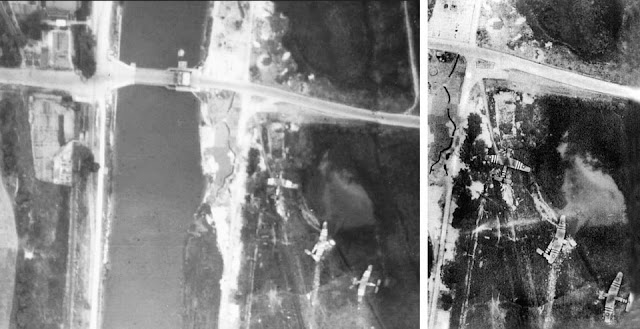














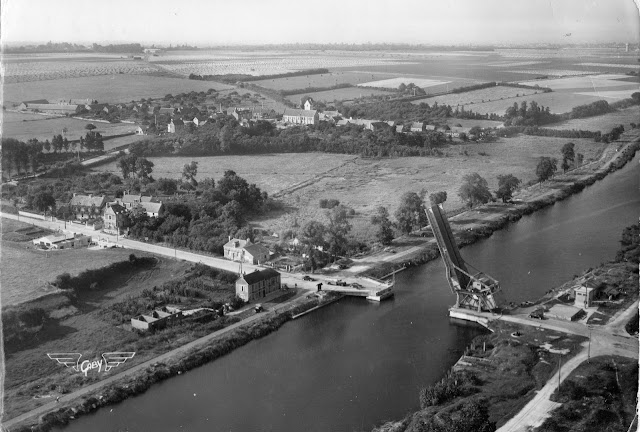
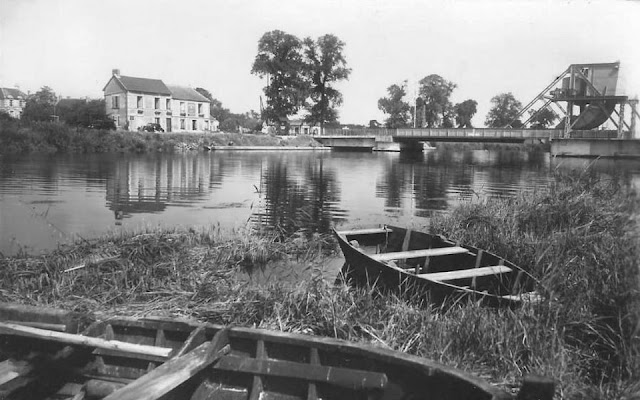

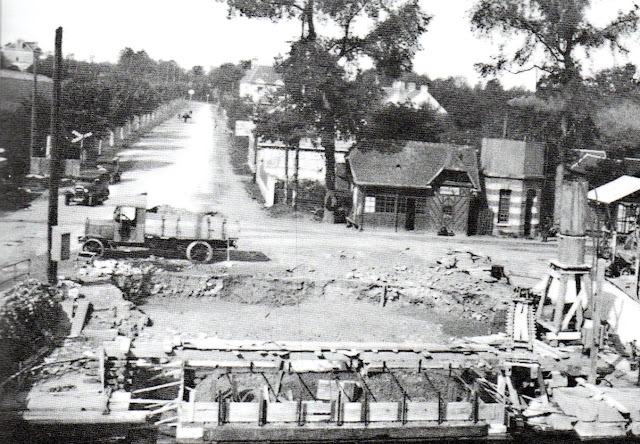

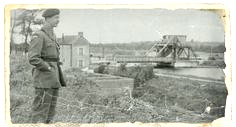



No comments:
Post a Comment